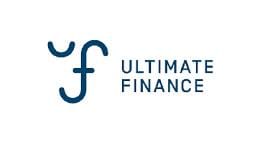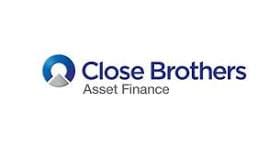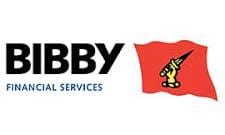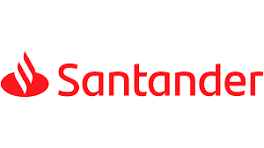What is Invoice Factoring?
Invoice factoring is a type of invoice finance that allows businesses to access cash tied up in their unpaid customer invoices. It is a way to address the common challenge of waiting for customers to pay which can be a strain on cash flow. Instead of waiting for payment a business ‘sells’ its invoices to a third-party finance provider in exchange for a cash advance. The finance factor firm then takes over the responsibility of collecting the payment from the customer.
The process typically works as follows: a business provides a service or goods to a customer and creates an invoice. Instead of sending the invoice to the customer directly for payment, the business assigns it to the finance factor. The factor then advances a portion of the invoice’s value, sometimes up to around 90%, to the business within a short timeframe. This provides an immediate cash injection, allowing the business to cover its operational costs, pay staff or invest in new projects.
The key feature that distinguishes invoice factoring from other forms of invoice finance is this transfer of credit control. The factoring company is responsible for communicating with your customers and collecting the payment. When the customer pays the invoice in full, they pay the factor directly. The factor then passes on the remaining balance of the invoice to you after deducting their fees and any interest charges. This can be a useful service for businesses that may not have the internal resources, skills or time to dedicate to chasing payments, or they may have expansion projects that require them either reallocate resources or access upcoming income quicker.
How Does Invoice Factoring Work in Practice?
The process of using an invoice factoring facility is designed to be pretty straightforward for the business using it. After a business enters into an agreement with a factoring company they can submit their new invoices as soon as they are raised. The provider will then assess the creditworthiness of the business’s customers to determine the level of advance they are willing to offer against it.
Once an invoice is approved, the business receives the agreed-upon cash advance. The factoring company then takes on the role of the sales ledger and credit control department. They will contact your customer and handle all aspects of the collection process. This can include sending reminders, following up on overdue payments and processing the final payment. This can free up the business to focus on other core activities.
When the customer pays the full amount of the invoice to the factoring company, the remaining portion of the original invoice value is released to the business. The factoring company will have already deducted its service fees which cover the advance, the credit control service and the cost of the funding itself. These fees can vary depending on the provider and the nature of the business and its customers.
Different Types and Related Finance Options
While factoring is a key part of invoice finance, it’s worth noting other related products to understand the full context of business funding.
Invoice Discounting
The most common alternative to factoring is invoice discounting. With invoice discounting, a business still receives a cash advance against its invoices but unlike factoring, the business retains full control of its sales ledger and credit control. The arrangement is confidential and the business’s customers are not aware that a third party is involved. This is often a good fit for businesses that have a robust internal finance function and a desire to maintain their end to end direct customer relationships.
Recourse and Non-Recourse Factoring
Invoice factoring agreements can be structured in two ways: recourse and non-recourse. With recourse, the business remains responsible for the debt. This means if a customer fails to pay an invoice, the business may have to buy back the debt from the finance firm. With non-recourse factoring, the finance firm takes on the risk of bad debt. This provides a layer of protection against customer insolvency and can offer a business a greater sense of financial security, though as you’d expect, comes at a higher cost for the service.
Invoice finance and factoring are just one part of a wider landscape of business funding options. They sit alongside products such as traditional business loans, asset finance, credit cards and overdrafts. The choice between these options often depends on a business’s profile and needs, which can be influenced by its stage of growth, its credit history and its cash flow needs. Factoring, however, is a particularly flexible alternative to traditional debt for the right type of business.
The Role of Factoring for Small Businesses
For small to medium-sized businesses, invoice factoring can be a valuable tool. The issue of late payments in the UK is a persistent problem and the time and effort spent chasing overdue invoices can be a significant drain on resources [9, 10]. By outsourcing this process, businesses can free up time to focus on growth, sales and improving or expanding their services. The cash injection from factoring can also help businesses manage their day-to-day expenses, such as payroll and supplier costs, without the need for a traditional loan. Many businesses fail due to cash flow issues and invoice finance can be a solution for this. Ultimately, invoice factoring is about turning a business’s sales ledger into a more liquid asset, providing a predictable and scalable source of working capital that can grow with the business itself.
Invoice Factoring FAQs
Is invoice factoring a loan?
Invoice factoring is not a traditional loan. Instead of borrowing money, you are effectively selling a business asset (your unpaid invoices) to a factoring company in exchange for a cash advance. This makes it a different type of funding solution, as it is based on the value of your sales rather than on your business’s credit history and it’s ‘repaid’ in a completely different method to standard or traditional loans.
Is invoice factoring only for big businesses?
No, invoice factoring is widely used by small to medium-sized businesses across many sectors. While some providers may have minimum turnover requirements, the product is very much designed to support businesses that need to manage cash flow and want to outsource their credit control function.
What happens if a customer doesn’t pay an invoice?
If a customer fails to pay an invoice, the outcome depends on the type of factoring agreement you have. With a recourse agreement, the responsibility for the debt remains with your business and you may have to buy back the debt from the factor. With a non-recourse agreement, the factor assumes the risk of bad debt, offering your business protection.
How quickly can a business get paid with invoice factoring?
A key benefit and main feature of invoice finance is the speed of the cash advance. Once your invoices are submitted and approved, a business can typically receive the funds within 24 to 48 hours. This is faster than waiting for customer payment terms to lapse which can sometimes be 30, 60 or even 90 days.
How much does invoice factoring cost?
The cost of invoice factoring is not a single fee but a combination of charges. This usually includes a service fee for the factoring company’s credit control and sales ledger management as well as an interest charge on the money advanced. The total cost can vary depending on the provider, the type of contract and the specifics of your business and customer base, so it is important to get a clear breakdown of all the costs before you proceed.





